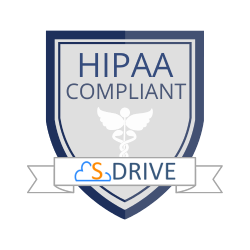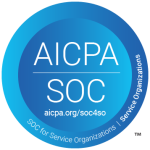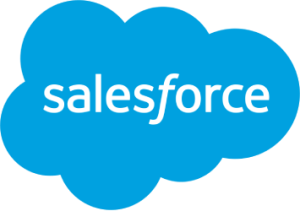Salesforce supports a wide range of business processes. Many teams still use old, manual steps to create documents like proposals, contracts, or onboarding forms. As outlined in our blog on 5 Signs You Need Document Generation Automation, these inefficiencies often lead to slow turnarounds, version mix-ups, and unnecessary risk. Recognizing those signs early can help teams streamline their workflows and stay ahead. That’s exactly where Document Generation tools make a real impact.
Document Generation: A Salesforce Must-Have
When used correctly, document generation tools save time and improve accuracy. They help teams stay in Salesforce instead of switching between different platforms.
Document Generation should be a smooth part of your Salesforce experience. You can use it to create sales quotes. Also useful for compliance reports and HR onboarding materials.
However, not every solution lives up to expectations. This checklist covers ten key features that make the difference between a basic tool and a true productivity booster.
1. Dynamic Templates That Scale with Your Needs
Every business works with a variety of customer types, product lines, and regions. If your document templates don’t reflect that diversity, your team spends too much time tweaking the same files.
Dynamic templates solve that problem. They adjust automatically based on the Salesforce data tied to each record. You can design a single contract template that includes different languages for enterprise accounts versus small businesses. Or generate a customer success plan that expands or contracts based on the number of services selected.
The benefits are twofold: fewer templates to manage and faster turnaround times for document generation. Teams don’t need to worry about selecting the right template. They just click, generate, and go.
2. Conditional Logic That Thinks for You
Conditional logic takes dynamic templates to the next level. It lets your documents react to Salesforce fields in real time. Imagine generating a proposal where a clause appears only if the discount exceeds 15 percent. Or a contract that includes a GDPR section only for clients based in the EU.
With conditional logic, you don’t need to build multiple templates for each variation. Instead, your logic handles it for you behind the scenes. This ensures every document stays compliant, relevant, and accurate.
It also reduces errors that happen when users manually adjust documents. That’s especially important in legal, finance, and healthcare, where small mistakes can have significant consequences.
3. Merge Fields That Do More Than Basics
A core feature of any Document Generation tool is its ability to merge Salesforce data into templates. But basic merge fields only go so far. The best solutions allow you to pull information from related lists, custom objects, and even calculated fields.
Let’s say you’re creating a quote that includes line items from an Opportunity. Your Document Generation tool should loop through each product. It should display quantities, calculate totals, and include discounts. All without any manual copy-paste work.
Merge fields should also support formatting, such as date and currency localization, so the final document looks polished. If you work with global clients, this feature alone saves hours of formatting headaches.
4. Approval Routing That Lives in Salesforce
Creating a document is just one step. Approving it is often where things slow down. Many teams rely on Slack messages or email threads to get buy-in from legal or finance. This approach leads to missed steps, long delays, or approvals that never happen.
The right Document Generation solution integrates with Salesforce approval workflows. If the contract value exceeds a set amount, it should route the draft to the legal team automatically. If a customer picks up a custom service package, a manager might need to approve the document. This approval is required before the document is sent out.
When approvals stay within Salesforce, it’s easier to track progress, enforce policies, and move faster as a team. No more switching platforms just to complete one task.
5. Version Control That Keeps Everyone on the Same Page
Sending the wrong version of a document is more than embarrassing as it can cause legal issues, lost revenue, or customer confusion. That’s why version control is a must.
Version control ensures users always work with the latest copy of a document. A good Document Generation tool keeps track of each version made. It shows who made changes and lets users restore older versions if needed.
It also makes collaboration easier. Sales, legal, and customer success teams can all view the same file, comment if necessary, and move forward with confidence. To learn more about versioning best practices, check out our blog on document version control.
6. eSignature Integration for Fast Completion
Once a document is ready, it needs to be signed. Adding eSignature integration turns Document Generation into a complete workflow instead of a piecemeal process. No matter which tool your team uses, like DocuSign or Adobe Acrobat Sign, integration is important. It lets users send and track signatures directly within Salesforce.
This avoids downloading documents, switching between tools, or following up manually. Instead, documents move from draft to signed status in minutes.
For sales teams, this shortens the time to close deals. For HR, it simplifies onboarding. For legal teams, it lowers risk and guarantees that they capture signatures correctly every time.
7. Smart File Naming and Storage
Once a document is signed, where does it go? If users need to name files manually or upload them to a separate system, they will likely make mistakes.
Look for a Document Generation tool that can automatically name files using fields from Salesforce records. For example, you might generate a contract named “Acme_Contract_2025-06-19” based on the Account name and today’s date.
Better yet, the tool should save documents directly to the correct Salesforce record. That way, everyone on the team knows where to find the latest contract, proposal, or form. No more searching through folders or wondering who has the final copy.
8. Format Flexibility for Different Use Cases
PDFs are great for finalized documents, but not every use case ends there. Sometimes, teams need editable Word or Excel files to make internal adjustments before finalizing.
The best Document Generation tools support multiple output formats, including PDF, DOCX, and XLSX. This flexibility allows each department to work the way they need.
Legal can finalize PDFs. Marketing can tweak Word templates. Finance can export Excel quotes for review. This small detail has a significant impact on collaboration, especially across departments.
9. Multi-Object Data Merge for Complex Documents
In real business scenarios, information rarely lives in one place. A single document might need data from Accounts, Opportunities, custom objects, and related lists.
Your Document Generation solution should handle that complexity. It should pull data from multiple Salesforce objects and display it properly in the final output.
A project report might include contact information from Accounts. It may have milestones from a custom project object and notes from related tasks. Without this feature, teams either simplify their documents or pull data manually, which wastes time.
10. Audit Trails for Compliance and Confidence
In regulated industries, it’s not enough to generate documents. You also need to show who created them, when, and whether they’ve changed.
A strong Document Generation tool includes full audit logs. It records when someone created a document, who created it, and whether someone modified it. These logs are critical for compliance reviews, legal discovery, or internal governance policies.
Even in non-regulated industries, audit trails add peace of mind. Managers can spot bottlenecks. Admins can track issues. This way, the entire organization gains better visibility.
S-Drive Example: Real-World Document Generation in Salesforce
S-Drive is a document management solution built natively on Salesforce. S-Drive is not only a Document Generation tool of its own. However, it is very important for document workflows. It helps with generation, approval, storage, and compliance.
Take the case of a healthcare organization using Salesforce to manage patient onboarding. They needed to generate welcome packets personalized for each patient. They used a Document Generation tool with S-Drive.
This helped them create dynamic templates. These templates had conditional content based on patient needs. The system automatically saved each completed packet to the patient’s Salesforce record in S-Drive.
Version control ensured providers always had the most current document. Audit trails tracked changes for HIPAA compliance. And because files never left Salesforce, they avoided the risk of data sprawl or lost documents.
For both patients and providers, this combination of generation and storage created a smoother, safer, and faster experience. This is just one of many ways organizations are improving workflows with S-Drive. You can look at more real-world S-Drive case studies. These show how teams in different industries solve document challenges in Salesforce.
Final Thoughts on Document Generation
Document Generation in Salesforce is more than just a time-saver. It helps teams scale processes, reduce risk, and deliver professional experiences to customers and partners. But the right tool must do more than insert data into a template. It should support dynamic logic, automated workflows, version control, and secure storage.
Using this checklist, you can see if your current tool or the one you are thinking about meets your team’s needs. When you are ready to store, organize, and protect your documents in Salesforce, S-Drive is here to help.
Ready to Take the Next Step with Document Generation?
Check out S-Drive on AppExchange if you’re exploring Document Generation in Salesforce and want a secure, scalable way to manage the documents you create. Contact us for pricing and details on how we can personalize a solution for your team.



